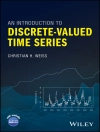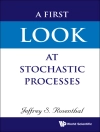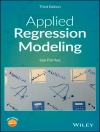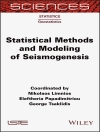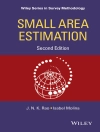This book gathers peer-reviewed contributions submitted to the 21st European Conference on Mathematics for Industry, ECMI 2021, which was virtually held online, hosted by the University of Wuppertal, Germany, from April 13th to April 15th, 2021. The works explore mathematics in a wide variety of applications, ranging from problems in electronics, energy and the environment, to mechanics and mechatronics. Topics covered include: Applied Physics, Biology and Medicine, Cybersecurity, Data Science, Economics, Finance and Insurance, Energy, Production Systems, Social Challenges, and Vehicles and Transportation.
The goal of the European Consortium for Mathematics in Industry (ECMI) conference series is to promote interaction between academia and industry, leading to innovations in both fields. These events have attracted leading experts from business, science and academia, and have promoted the application of novel mathematical technologies to industry. They have also encouraged industrial sectors to share challenging problems where mathematicians can provide fresh insights and perspectives. Lastly, the ECMI conferences are one of the main forums in which significant advances in industrial mathematics are presented, bringing together prominent figures from business, science and academia to promote the use of innovative mathematics in industry.
İçerik tablosu
Foreword.- Preface.- Chapter 1. Model Reduction for a port-Hamiltonian Formulation of the Euler Equations.- Chapter 2. ECMI Modelling Week: First Time in Russia and First Time Online.- Chapter 3. Parameter Calibration with Consensus-Based Optimization for Interaction Dynamics Driven by Neural Networks.- Chapter 4. Cancer Fingerprints by Topological Data Analysis.- Chapter 5. Projected AQIF Parallel Algorithm for Solving EHL Line Contact Problems: Parallel Computing.- Chapter 6. Effectivity Analysis of Operator Splitting and the Average Method.- Chapter 7. Application of the Carleman Linearisation to Two-Point Boundary Value Problems.- Chapter 8. Immersed Boundary Models of Biofilm Spread.- Chapter 9. Numerical Simulation of a Four Serotype Dengue Fever Model.- Chapter 10. The Effect of the Number of Neural Networks on Deep Learning Schemes for Solving High Dimensional Nonlinear Backward Stochastic Differential Equations.- Chapter 11. Qualitatively Correct Numerical Methods for the Basic Ross–Macdonald Malaria Model.- Chapter 12. Dynamics of a Delayed Kaldor-Kalecki Model of Mutually Linked Economies.- Chapter 13. Dynamic Iterations for Nonlinear Systems Applied in Population Dynamics.- Chapter 14. Delay Differential Equations for Epidemic Models with Temporary Immunity.- Chapter 15. Next-Gen Gas Network Simulation.- Chapter 16. Parameter Estimation via Adjoint Functions in Epidemiological Reaction-Diffusion Models.- Chapter 17. Graph-based View of an Equilibrium Model for Nonwoven Tensile Strength Simulations.- Chapter 18. Global-Scale or Fine-Scale Modelling? A Critical Look at Experimental Design.- Chapter 19. An Isogeometric One-Dimensional Model for Developable Flexible Elastic Strips.- Chapter 20. A Hybrid DEIM and Leverage Scores Based Method for CUR Index Selection.- Chapter 21. Data-Driven Modeling and Control of Complex Dynamical Systems Arising in Renal Anemia Therapy.- Chapter 22. Regional Estimates of Reproduction Numbers with Applicationto COVID-19.- Chapter 23. Complexity Reduction for Parametric High Dimensional Models in the Analysis of Financial Risk.- Chapter 24. A Low-Rank Extended Kalman Filter for Gas Pipeline Networks.- Chapter 25. An Analysis of Connectivity between Dengue Cases and Climate Factors in Sri Lanka Based on Field Data.- Chapter 26. Cellular Nonlinear Computing on the Edge of Chaos.- Chapter 27. Efficient Yield Optimization with Limited Gradient Information.- Chapter 28. Thermomechanical Modelling for Industrial Applications.- Chapter 29. The Virtual Paint Shop – Simulation of Oven Curing.- Chapter 30. Parameter Identification and Forecast with a Biased Model.- Chapter 31. Estimation of Time-Dependent Parameters in a Simple Compartment Model using Covid-19 Data.- Chapter 32. Comparison of Performances of Selected Forecasting Models: An Application to Dengue Data in Colombo, Sri Lanka.- Chapter 33. Approaches for Going Beyond Linear Frequency Domain Powertrain Simulation.- Chapter 34. Diffusion of Electron Density in Dye-Sensitized Solar Cells.- Chapter 35. Modeling and Simulation of Inelastic Effects in Composite Cables.- Chapter 36. High-Throughput Analysis of Potato Vitality.- Chapter 37. Optimized Hydrodynamical Model for Charge Transport in Graphene.- Chapter 38. On the Discretization of Diffusion Fluxes for a System of PDEs.- Chapter 39. Dynamics of the N-fold Pendulum in the Framework of Lie Group Integrators.- Chapter 40. Hydrodynamic Interaction between a Row of Oblate Spheroids in a Steady stream of Viscous Fluid.- Chapter 41. Modelling and Computing the Total Value Adjustment for European Derivatives in a Multi-Currency Setting.- Chapter 42. A Multi-Level Monte-Carlo with FEM for XVA in European Options.- Chapter 43. Estimation of Cable Bundle Stiffness based on Gaussian Process Regression.- Chapter 44. Modeling and Simulation of Pedestrian Interaction with Moving Obstacles using Particle Method.- Chapter 45. An Anisotropic Interaction Model for Pedestrian Dynamics with Body Size.- Chapter 46. Quantitative Characterization of Ductility for Fractographic Analysis.- Chapter 47. Optimal Control to Facilitate the Development Process of Exoskeletons.- Chapter 48. Vanadium Redox Flow Batteries: Asymptotics and Numerics.- Chapter 49. Time-Adaptive High-Order Compact Finite Difference Schemes for Option Pricing in a Family of Stochastic Volatility Models.- Chapter 50. Multirate DAE-Simulation and its Application in System Simulation Software for the Development of HVAC Systems.- Chapter 51. Mathematical Models for Electromagnetic Conditions in Submerged Arc Furnaces.- Chapter 52. Contaminant Removal by Adsorption.- Chapter 53. Vector Lattice Boltzmann Equations: From Magnetohydrodynamics to Active Matter.- Chapter 54. A Deep Smoothness WENO Method with Applications in Option Pricing.- Chapter 55. Proactive Dengue Management System Synergize by an Exponential Smoothing Model.- Chapter 56. Multipatch ZIKV Model and Simulations.- Chapter 57. Discrete port-Hamiltonian Coupled Heat Transfer.- Chapter 58. A Non-Reflecting Boundary Condition for Multispeed Lattice Boltzmann Methods.- Chapter 59. Correlation Matrices driven by Stochastic Isospectral Flows.- Chapter 60. Investigation of Darwin Model with Two Types of Coulomb Gauge Condition in Frequency- Domain Electromagnetic Finite-Element Method.- Chapter 61. Statistical and Machine Learning Methods for Automotive Spare Parts Demand Prediction.- Chapter 62. The Parareal Algorithm and the Sparse Grid Combination Technique in the Application of the Heston Model.- Chapter 63. A Higher-Order NSFD Method for a Simple Growth Model in the Chemostat.- Chapter 64. Stability and Convergence of a Class of RKDG Methods for Maxwell’s Equations.- Chapter 65. Safeguarding the Nation’s Digital Memory: Bayesian Network Modelling of Digital Preservation Risks.- Chapter 66. Computational Methods for Market Making Algorithms.- Chapter 67. Study of Self-Adjoint Singularly Perturbed BVP by Septic Hermite Collocation Method.- Chapter 68. Data-Driven Approach for Systemic Risk: A Macroprudential Perspective.- Chapter 69. Modelling Ozone Disinfection to Prevent Covid-19 Transmission.
Yazar hakkında
MATTHIAS EHRHARDT is a Professor for Applied Mathematics and Numerical Analysis at the IMACM, the Institute for Mathematical Modelling, Analysis and Computational Mathematics at the University of Wuppertal. His research fields are the numerical solution of partial differential equations, especially on unbounded domains und numerical methods in computational finance.
MICHAEL GÜNTHER is a Professor for Applied Mathematics and Numerical Analysis at the IMACM, the Institute for Mathematical Modelling, Analysis and Computational Mathematics at the University of Wuppertal. His main research field is the modelling, analysis and numerical simulation of time-dependent coupled heterogeneous problems with applications in computational engineering, computational finance and computational physics.







